Pen art transforms ordinary paper into extraordinary worlds through intricate lines and precise dots. Artists use techniques like crosshatching and stippling to create shadows, textures, and depth that bring illustrations to life. Popular tools include Pigma Micron pens and quality paper with proper borders for balanced compositions. Whether creating maximalist patterns or minimalist designs, pen artists develop their unique style through practice and experimentation. The journey from blank page to mesmerizing illustration awaits those ready to pick up their pens.
Key Takeaways
- Black Pigma Micron pens and quality paper like Strathmore’s 300 series are essential tools for creating detailed pen and ink artwork.
- Crosshatching and stippling techniques create depth and texture through angled lines and tiny dots in pen illustrations.
- Detailed pen drawings can take 5-100 hours depending on subject complexity, with fauna typically requiring the most time.
- Maximalist line art uses intricate patterns while minimalist approaches embrace empty space, with many artists combining both styles.
- Finding your artistic voice requires experimenting with different techniques and studying masters while developing a signature style.
The Evolution of Pen and Ink Drawing Through Art History
While ancient civilizations were busy building monuments and conquering lands, they were also quietly developing one of humanity’s most enduring art forms—pen and ink drawing.
From Egyptian hieroglyphics to Chinese calligraphy, people were dipping quills and brushes into ink centuries before selfies existed!
Ancient artists were the original influencers, creating lasting impressions with simple tools when “going viral” meant surviving a plague.
Pen and Ink Art really hit the big time during the Renaissance. Artists like Dürer and da Vinci (total rockstars of their day) created mind-blowing detailed drawings that made people’s jaws drop.
Fast-forward to the 19th century, and Gustave Doré was basically the Marvel Comics of literature illustrations!
The 20th century brought wild experimentation—think crazy surrealist drawings and tiny dots making huge pictures.
Today’s artists mix traditional techniques with digital tools, proving that Pen and Ink Art refuses to go out of style!
Essential Tools and Materials for Fine Line Drawing
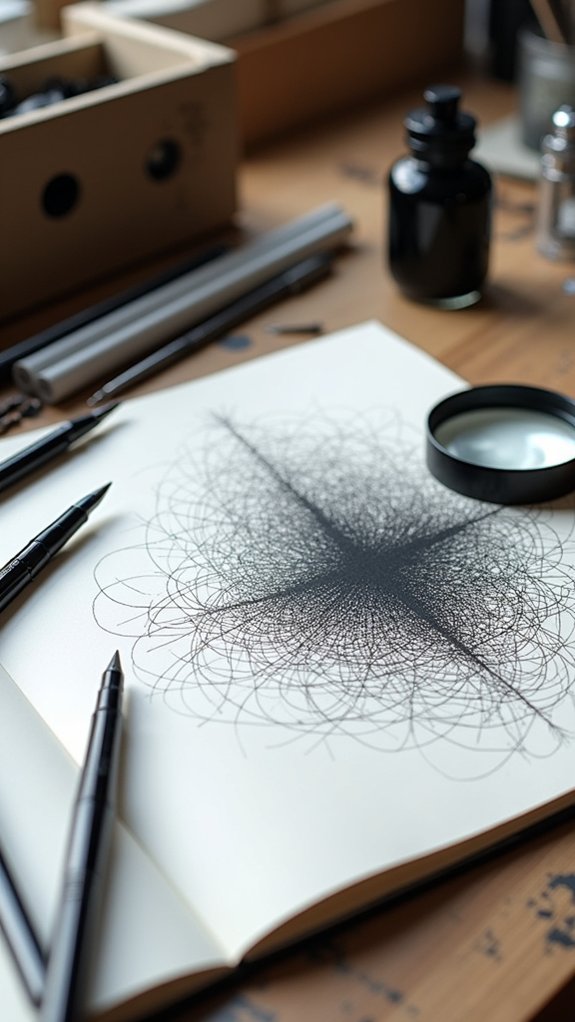
Fine line drawing begins with choosing the right tools, and many artists swear by black Pigma Micron pens for their reliability and smudge-resistant properties.
The paper you select is equally important—Strathmore’s 300 series (70 lb) works great for smaller pieces, while Canson’s 70 lb paper can handle larger drawings up to 18″ x 24″.
Creating a one-inch border around your working area not only frames your composition nicely but also gives you a visual guide that helps balance your artwork from the start.
Pen Selection Fundamentals
Every successful fine line illustration begins with choosing the right tools, particularly the perfect pen for your artistic vision. Pigma Micron pens lead the pack for serious artists, offering incredible precision that makes tiny details pop off the page!
These trusty tools come in various sizes, from super-thin 0.005mm (barely visible!) to bold 0.8mm tips, letting artists create amazing depth and texture in their work.
The magic happens when you experiment with different pressures—push down harder for darker lines or lighten up for whisper-thin marks. Some artists collect a rainbow of sizes, while others master just two or three favorites.
Whatever you choose, consistency is key! Regular practice with your chosen Micron pens will transform awkward scribbles into jaw-dropping illustrations that friends won’t believe you created by hand.
Paper Quality Matters
Now that you’ve selected your ideal pens, the surface they’ll dance across demands equal attention!
Paper quality can make or break your artwork, turning a masterpiece into a mess if you choose poorly.
Here’s what every pen artist needs to know:
- Strathmore drawing paper (300 series, 70 lb) provides a sturdy canvas that won’t let ink bleed or warp.
- Canson paper works wonders for bigger projects (18″ x 24″), with a smooth surface perfect for intricate details.
- Heavier papers (70+ lb) prevent frustrating ink seepage and protect your hard work.
- Acid-free options keep your art from yellowing over time—nobody wants their creation to fade away!
- Different textures create different effects, so experiment to find what makes your lines pop!
Basic Techniques for Creating Depth and Texture in Pen Art
Artists seeking to add life to their pen drawings must master techniques that create the illusion of three-dimensional space on flat paper.
Crosshatching, which involves layering lines at different angles, allows artists to build shadows and textures that make objects pop off the page.
Stippling takes patience but rewards artists with incredible dimension, as tiny dots clustered together or spaced apart create stunning gradients of light and shadow that can transform simple outlines into richly detailed artwork.
Crosshatching Fundamentals
The humble technique of crosshatching transforms simple pen lines into rich, dimensional artwork that seems to leap off the page.
This cornerstone of ink drawings involves strategically layering intersecting lines to create shadows, texture, and form. Mastering crosshatching fundamentals opens up endless possibilities for budding artists!
- Close lines = darker areas; spaced lines = lighter effects (it’s like magic!)
- Try different angles for your lines to create varied textures
- Practice controlling your pressure – light touch for delicate areas, firm press for bold shadows
- Experiment on scrap paper first (trust me, you’ll thank yourself later!)
- Mix crosshatching with other techniques like stippling for super cool, complex effects
The beauty of crosshatching lies in its simplicity and versatility, making it perfect for artists at any level.
Stippling For Dimension
Dots—thousands of tiny, patient dots—transform blank paper into a world of depth and shadow through the mesmerizing technique of stippling. This magical approach creates texture and dimension that can make flat drawings pop right off the page!
Artists control the density of these dots—bunching them close together for darker shadows or spacing them far apart for lighter areas. The result? Smooth shifts between tones that look almost 3D!
Fine-tipped pens, like Pigma Microns, are perfect for this technique because they create crisp, consistent dots.
Beginners should start with simple shapes before tackling complex designs. Fair warning: stippling demands serious patience—a detailed piece might take hours or even days to complete.
But wow, when those dots finally come together, the wait is totally worth it!
Mastering the Art of Hatching and Cross-Hatching
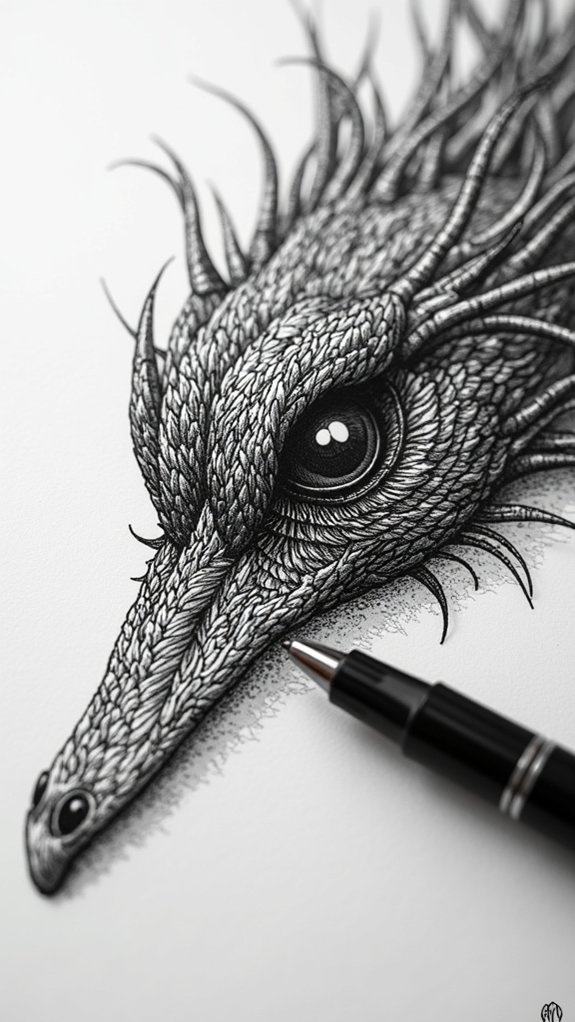
Many pen artists consider hatching and cross-hatching the foundation of creating depth and dimension in their work.
These techniques transform flat drawings into dynamic illustrations that seem to pop off the page! By manipulating the thickness, angle, and spacing of lines, artists can make objects appear lighter, darker, or curved in amazing ways.
The magic of pen techniques lies in transforming simple lines into worlds of depth and dimension through artistic manipulation.
- Hatching uses parallel lines to create shadows of varying intensity
- Changing line spacing (closer = darker, farther apart = lighter) produces different tones
- Cross-hatching (overlapping lines at different angles) creates richer textures
- Contour hatching follows the shape of objects, adding a 3D feel
- Experimenting with different pen pressures adds personality to your hatching style
Practice makes perfect! The more consistent your line work becomes, the more professional your hatching will look.
Nature-Inspired Motifs in Contemporary Pen Illustrations
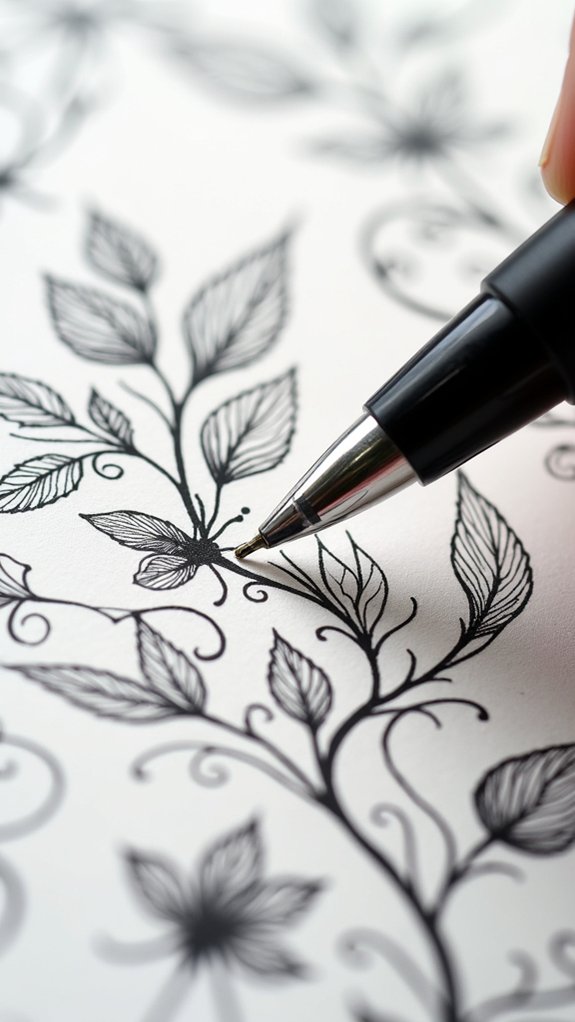
Throughout history, nature has profoundly inspired artists, but contemporary pen illustrators have taken this connection to breathtaking new levels! Artists like Eli Helman create mind-blowing detailed pen illustrations that combine abstract designs with recognizable elements from the natural world. Using materials like Pigma Micron pens, these artists spend anywhere from 5 to 100 hours crafting intricate pieces that capture nature’s essence.
| Nature Element | Common Techniques | Time Investment |
|---|---|---|
| Sceneries | Layered lines | 15-40 hours |
| Flora | Dotwork patterns | 5-25 hours |
| Fauna | Cross-hatching | 20-100 hours |
The magic happens when artists blend planned elements with spontaneous, organic patterns that seem to grow naturally on the page. These nature-inspired works aren’t just pretty pictures—they’re powerful expressions that connect viewers to the environment in ways that, honestly, can give you goosebumps!
Architectural Precision: The Beauty of Detailed Building Portraits
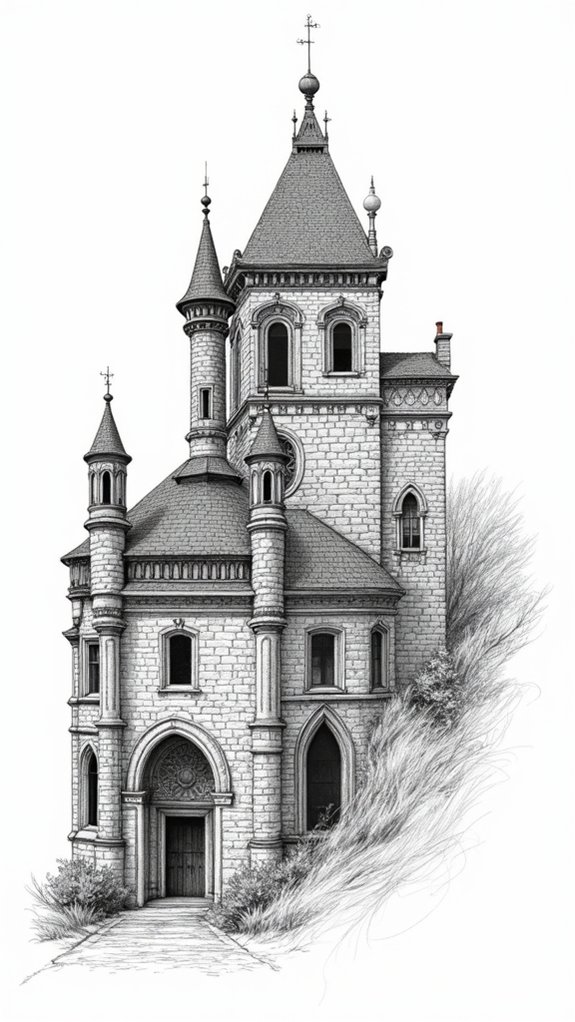
When pen meets paper to capture architecture, something magical happens that transforms ordinary buildings into extraordinary works of art. The meticulous ink strokes bring structural details to life, creating portraits that evoke deep emotional connections to cherished places.
- Award-winning artists in Cardiff use their architectural backgrounds to create stunning pen illustrations of iconic structures.
- Black Pigma Micron pens on quality paper guarantee precision and durability in these detailed building portraits.
- The creative process combines spontaneous pattern work with carefully planned layouts.
- Famous commissions include breathtaking renditions of St Paul’s Cathedral and Tower Bridge.
- Each architectural pen drawing captures not just the building’s appearance, but its essence and character.
These intricate ink illustrations showcase the perfect marriage of artistic vision and architectural knowledge, preserving beloved structures through the humble yet powerful medium of pen on paper.
Maximalist vs. Minimalist Approaches in Line Art
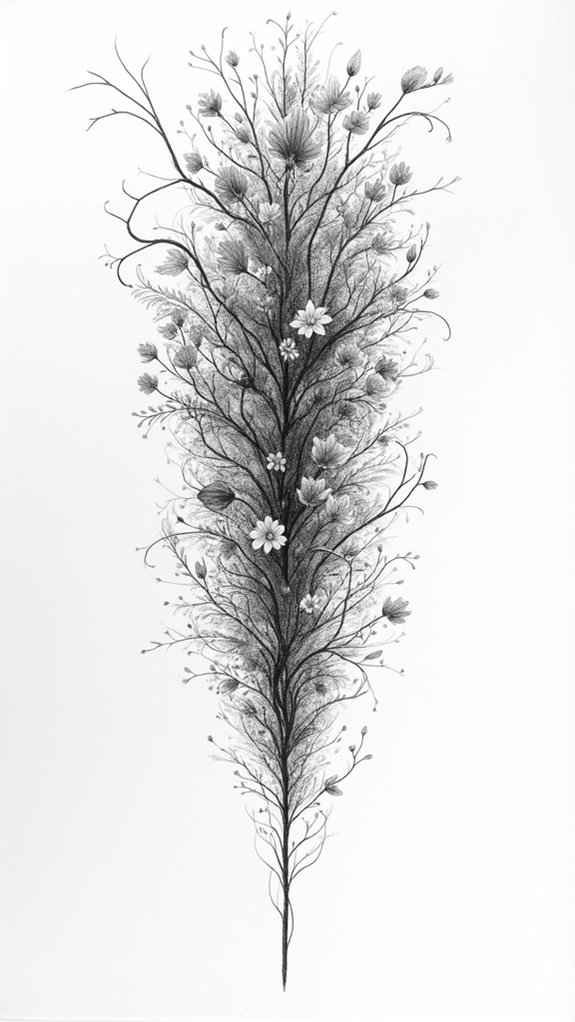
Line art exists on a fascinating spectrum from ultra-detailed to beautifully spare.
On one end, maximalist line art bursts with intricate patterns and dense arrangements that can take artists up to 100 hours to complete! These detailed drawings pull viewers into complex worlds where every inch contains something new to discover.
Minimalist approaches, however, embrace simplicity and breathing room. With fewer lines and more empty space, these works create a sense of calm that lets the mind wander peacefully.
Interestingly, many artists combine both styles in single pieces, using minimalist areas to make the detailed sections pop even more!
This clever contrast creates visual excitement while giving eyes a place to rest. The style an artist chooses drastically affects how we feel when looking at their work—either energized by complexity or soothed by simplicity.
From Sketch to Final Piece: The Creative Process
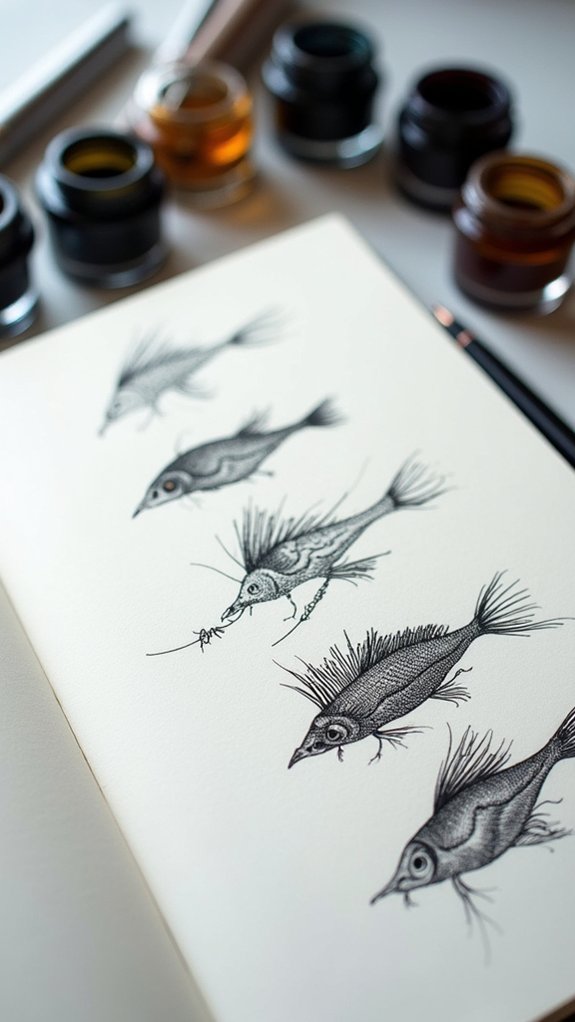
Creating pen art begins with a crucial step that many viewers never see—mapping out a one-inch border around the paper. This simple boundary helps artists visualize the canvas before diving into their masterpiece with an original pen in hand.
The artist’s journey begins unseen—a simple border drawn first, defining space before pen touches paper to create worlds within.
The journey from blank page to finished artwork follows a fascinating process:
- First, the artist sketches focal points that anchor the entire composition.
- Intricate details emerge gradually, building complexity around central themes.
- Spontaneous patterns develop across multiple sittings, sometimes spanning weeks.
- Smaller 8″×10″ pieces might take 5-10 hours, while larger works demand up to 100 hours.
- Titles come only after completion, honoring the art’s organic development.
Artists like Eli Helman exclusively use black Pigma Micron pens on special paper, ensuring crisp lines that won’t smudge as their vision unfolds hour by hour.
Finding Your Stylistic Voice in Black and White Illustrations
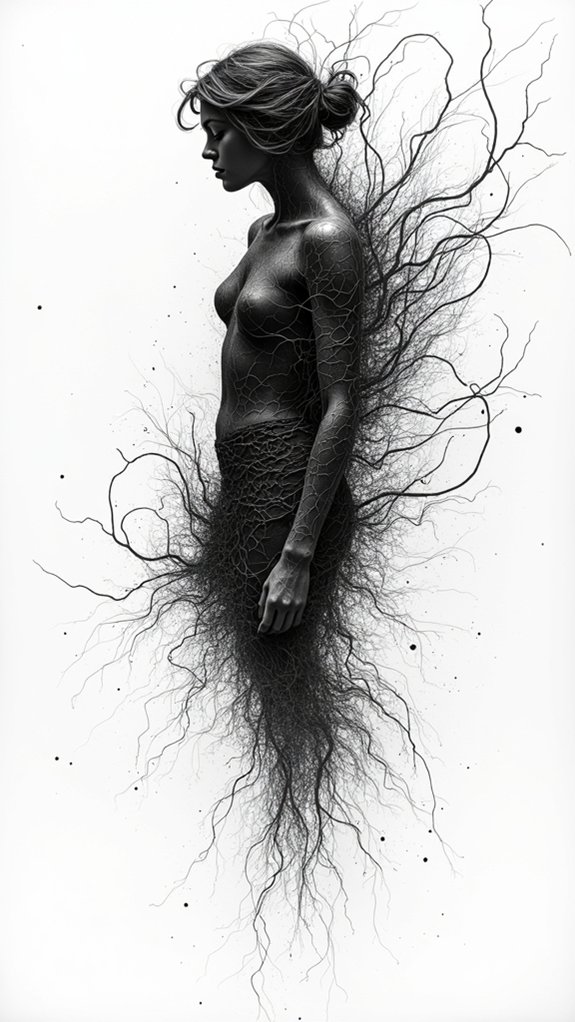
As artists dive deeper into the world of pen illustration, discovering a personal artistic voice becomes the magical journey that sets their work apart from others. This voyage often begins with experimenting with different pens, like fine-tipped Pigma Microns, which create varied line weights that define a distinctive line drawing style.
Artists might surprise themselves by adding unexpected patterns or intricate details on the fly!
Regular practice with techniques such as stippling or pointillism isn’t just helpful—it’s essential! Looking at masters like Miro, Kandinsky, and Klee can spark ideas for mixing abstract elements with recognizable images.
Working in different sizes, from cozy 8″ x 10″ sketches to bold 18″ x 24″ statements, helps artists understand how scale impacts their unique black and white language. The more they play, the clearer their voice becomes!
The Therapeutic Benefits of Detailed Pen Drawing
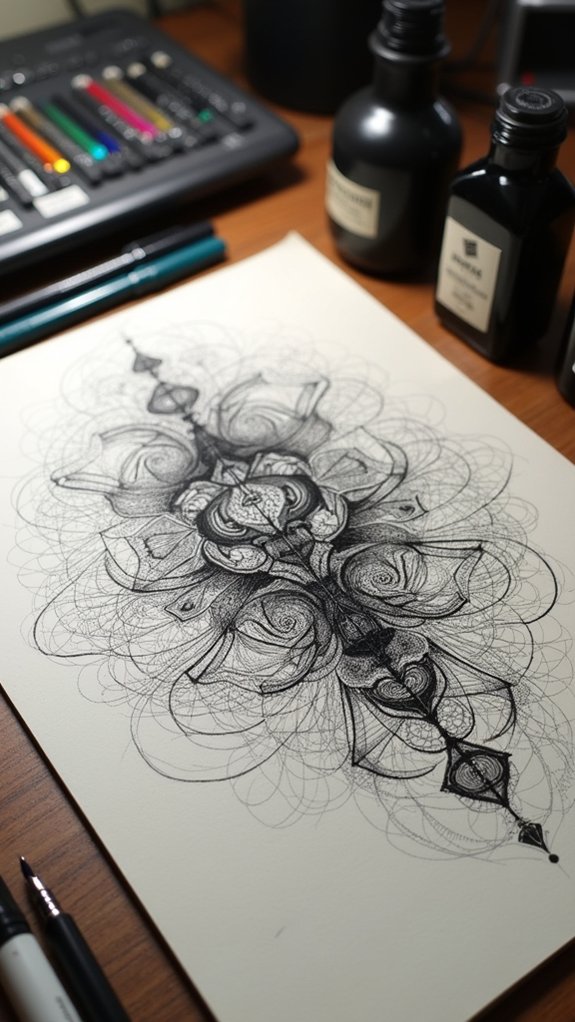
While many artists pick up their pens to create beautiful artwork, they might not realize they’re also picking up a powerful tool for mental wellness! The rhythmic flow of black ink across paper does more than create stunning visuals – it actually calms your brain and soothes your nerves!
Research shows detailed pen drawing offers amazing benefits:
- Creates a meditation-like state that crushes stress and anxiety
- Improves hand-eye coordination and fine motor skills
- Boosts self-esteem when you complete an awesome piece
- Provides a visual voice for feelings that are hard to express
- Enhances brain power by challenging you to think creatively
Next time you feel overwhelmed, try losing yourself in intricate line work. Your mind—and your art collection—will thank you!
Turning Your Passion Into Professional Commissions
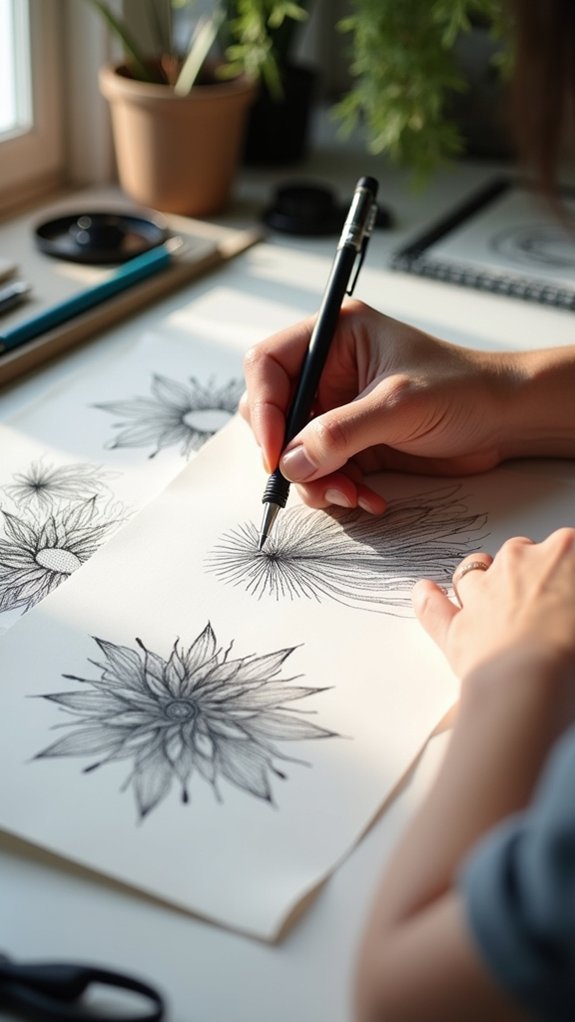
Transform your pen art hobby into a thriving business with the right approach to professional commissions! Artists who specialize in black and white ink illustrations can attract clients looking for unique, personalized artwork. Building a portfolio that showcases your signature style is key to standing out in the competitive market.
| Commission Type | Time Investment | Average Price |
|---|---|---|
| Pet Portraits | 5-15 hours | $75-$250 |
| House Drawings | 10-25 hours | $150-$350 |
| Wedding Venues | 15-40 hours | $200-$500 |
| Family Portraits | 20-50 hours | $250-$650 |
| Detailed Sceneries | 30-100 hours | $300-$1,000 |
Setting up an Etsy shop or personal website makes your work discoverable, while engaging with fellow artists on social media can lead to exciting collaborations! Remember, time management is essential—detailed black and white drawings take patience, so set realistic deadlines that won’t leave you scrambling!
Frequently Asked Questions
What Are Pen and Ink Drawings Called?
Pen and ink drawings are commonly referred to as line art or ink sketches. These artistic expressions utilize various ink styles including stippling, hatching, and cross-hatching to achieve texture and depth.
What Is Pen and Ink Illustration?
Pen and ink illustration is an artistic medium employing various ink techniques on paper. It creates detailed images through precise line work, stippling, cross-hatching and other methods that produce permanent, high-contrast visual compositions.
How Do You Illustrate Line Art?
Line art illustration begins with a light sketch, followed by applying definitive strokes using fine-tipped pens. Line techniques such as hatching, stippling and varied pressure create texture, depth and visual interest.
What Are the 4 Techniques of Pen?
The four fundamental ink techniques in pen art include hatching (parallel lines), cross-hatching (intersecting lines), stippling (dots for texture), and line drawing (continuous contours defining forms and structures).
Conclusion
Pen art captivates not just through its striking black and white contrasts, but through the patience and skill it cultivates. Whether you’re doodling in a notebook or creating elaborate illustrations, the humble pen offers endless creative possibilities. As you practice these techniques and develop your unique style, remember that each line tells part of your story. Your artistic journey, like your drawings, unfolds one stroke at a time.

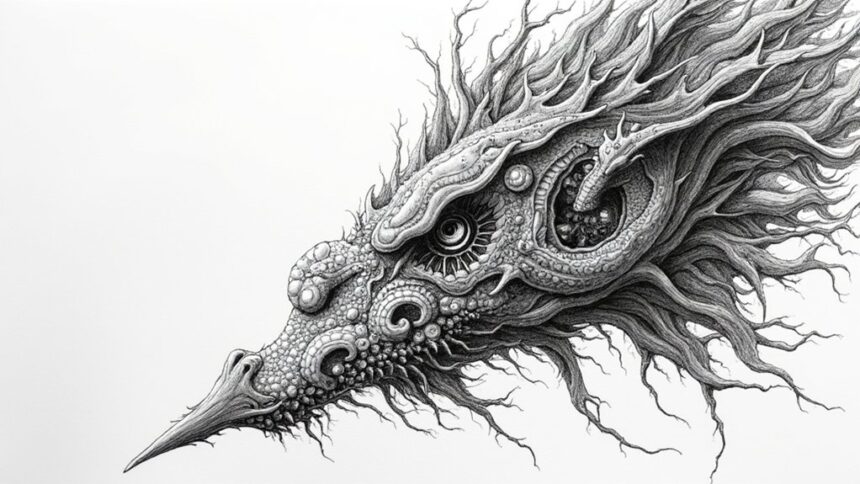
Leave a Reply